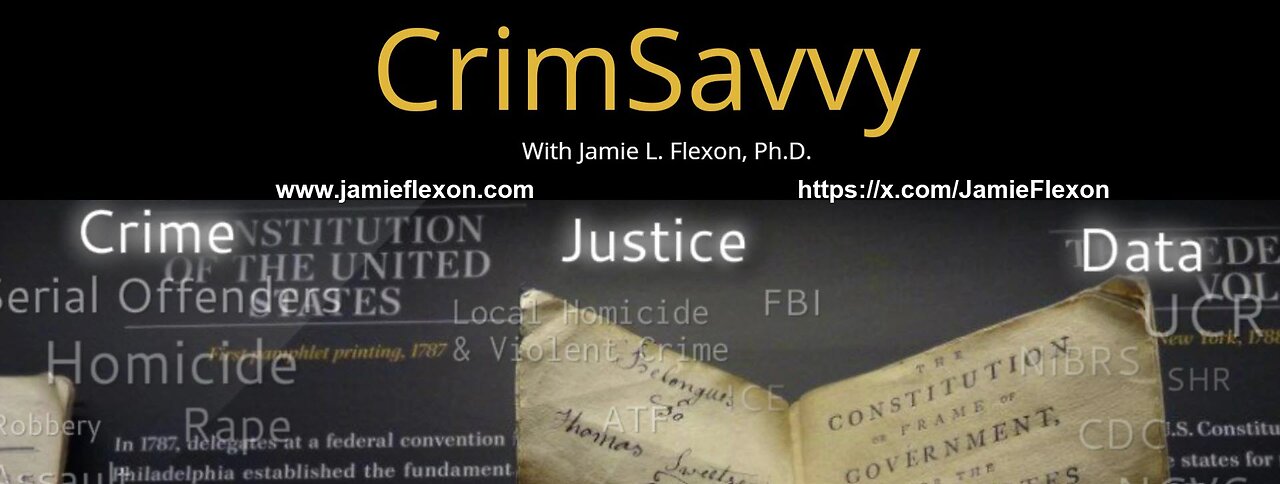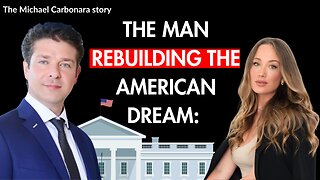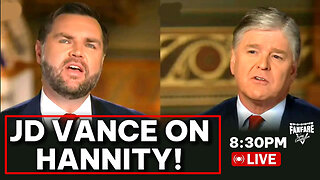Premium Only Content

CrimSavvy: Crime and the Media – How the News Shapes Our Perception of Crime
Is crime really rising—or is it just being reported more? In this video, we explore the social construction of crime and how media coverage influences what we fear, who we blame, and which crimes make headlines. From Stanley Cohen’s "moral panics" to George Gerbner’s "Mean World Syndrome," we break down how crime is portrayed, why certain groups are stereotyped, and how public opinion is shaped by sensational reporting. We also compare real crime data—like the FBI’s 2023 report—with media narratives to uncover the truth behind the headlines.
Topics covered:
• What is the social construction of crime?
• Media framing, sensationalism & moral panics
• Who gets labeled a criminal and why
• The Mean World Syndrome and fear of crime
• FBI 2023 crime statistics vs. media coverage
• How the media could do better
Sources:
Gerbner, G. & Gross, L. (1976). Living with television: The violence profile. Journal of Communication, 26(2), 173–199.
Introduces the "Mean World Syndrome" – the idea that heavy TV viewers perceive the world as more dangerous than it is.
Cohen, S. (1972). Folk Devils and Moral Panics: The Creation of the Mods and Rockers. London: MacGibbon & Kee.
Cohen, S. (2011). Folk devils and moral panics. Routledge.
Origin of the term “moral panic” and how the media amplifies perceived threats.
FBI. (2024). Crime in the Nation: 2023 Summary Statistics. https://www.fbi.gov
Official FBI data showing violent crime decreased in 2023, with an 11.6% drop in murder.
Summary Available at https://www.fbi.gov/news/press-releases/fbi-releases-2023-crime-in-the-nation-statistics
Surette, R. (2015). Media, Crime, and Criminal Justice: Images, Realities, and Policies (5th ed.). Cengage Learning.
Explores how media selectively portrays crime and reinforces stereotypes.
Dowler, K. (2003). Media Consumption and Public Attitudes Toward Crime and Justice: The Relationship Between Fear of Crime, Punitive Attitudes, and Perceived Police Effectiveness. Journal of Criminal Justice and Popular Culture, 10(2), 109–126. https://www.researchgate.net/profile/Kenneth-Dowler/publication/285675137_Media_consumption_and_public_attitudes_toward_crime_and_justice_The_relationship_between_fear_of_crime_punitive_attitudes_and_perceived_police_effectiveness/links/5755c8b008ae10c72b66e9c1/Media-consumption-and-public-attitudes-toward-crime-and-justice-The-relationship-between-fear-of-crime-punitive-attitudes-and-perceived-police-effectiveness.pdf
Empirical link between media consumption and fear of crime/punitive beliefs.
Chermak, S. (1995). Image control: How police affect the presentation of crime news. American journal of police, 14(2), 21-43.
Shows how institutional actors help shape which crimes are emphasized in the media.
-
 23:42
23:42
Robbi On The Record
3 hours ago $1.86 earnedMAGA 2.0? BTS of Michael Carbonara for Congress
18.7K3 -
 LIVE
LIVE
Drew Hernandez
22 hours agoSHAPIRO COOKS HIMSELF: SAYS YOU DON'T DESERVE TO LIVE WHERE YOU GREW UP?
1,007 watching -
 1:59:26
1:59:26
Barry Cunningham
5 hours agoLIVE WATCH PARTY: J.D. VANCE ON THE SEAN HANNITY SHOW!
26.4K16 -
 2:11:15
2:11:15
megimu32
3 hours agoOFF THE SUBJECT: Judging Strangers on Reddit 😭 PLUS! Fortnite Chaos!
21.4K5 -
 2:53:16
2:53:16
Mally_Mouse
3 days ago🎮 Throwback Thursday! Let's Play: Stardew Valley pt. 32
31.4K1 -
 28:25
28:25
ThisIsDeLaCruz
13 hours ago $2.44 earnedInside the Sphere Part 2: Kenny Chesney’s Vegas Stage Revealed
13.5K -
 LIVE
LIVE
Lofi Girl
2 years agoSynthwave Radio 🌌 - beats to chill/game to
193 watching -
 LIVE
LIVE
SilverFox
23 hours ago🔴LIVE - ARC Raiders HUGE UPDATE - NEW MAP w/ Fragniac
146 watching -
 2:11:25
2:11:25
Nikko Ortiz
5 hours agoLATE NIGHT GAMING... | Rumble LIVE
93K6 -
 9:30:12
9:30:12
Dr Disrespect
13 hours ago🔴LIVE - DR DISRESPECT - ARC RAIDERS - NORTH LINE UPDATE
131K9